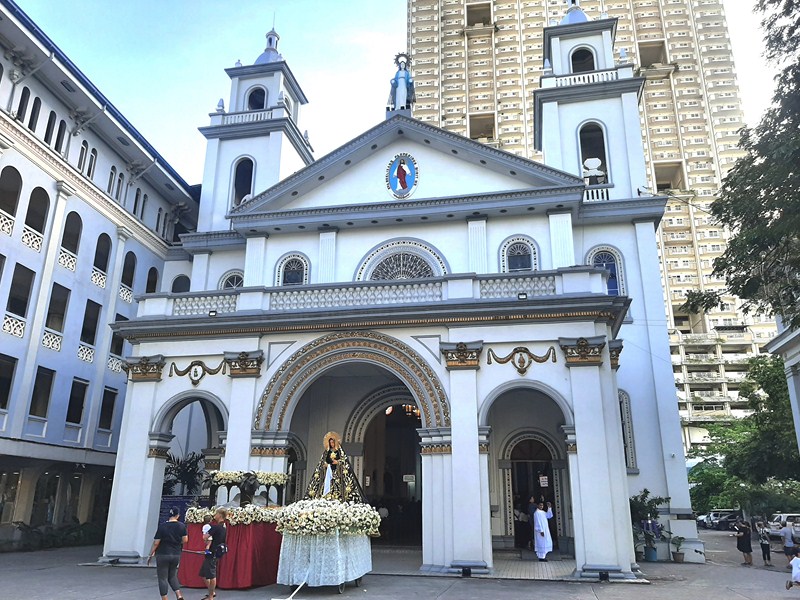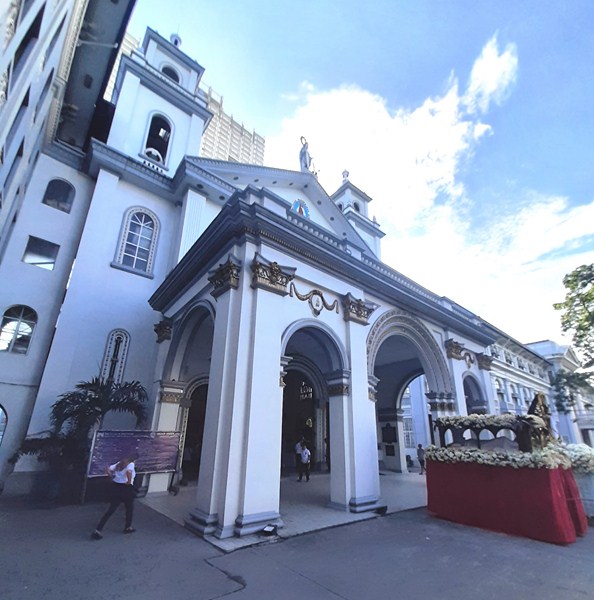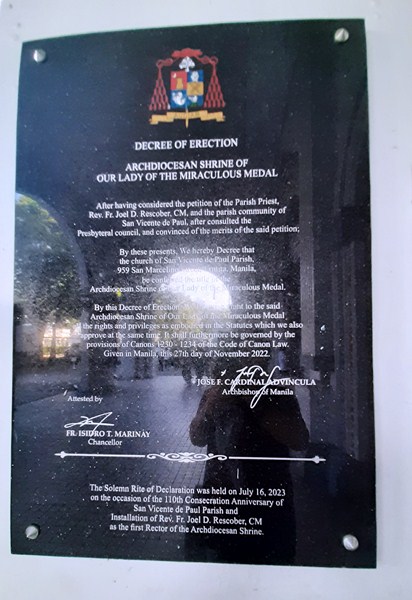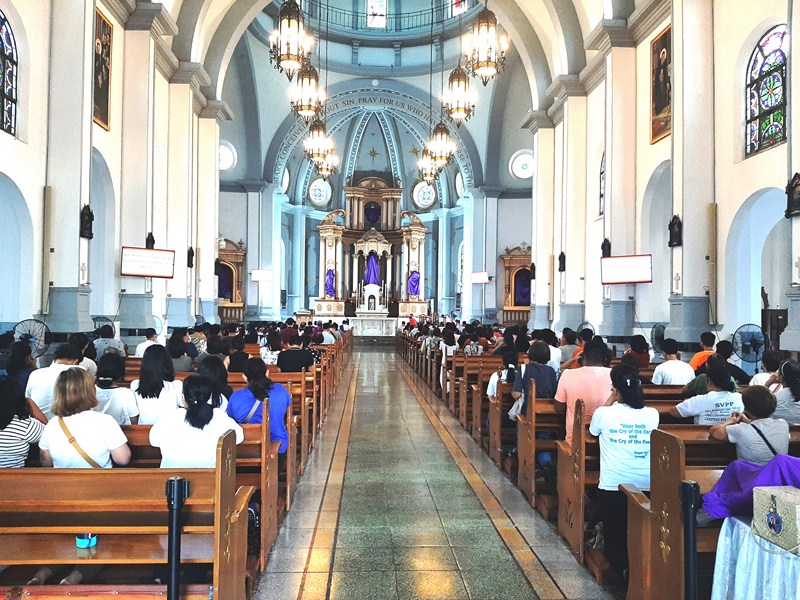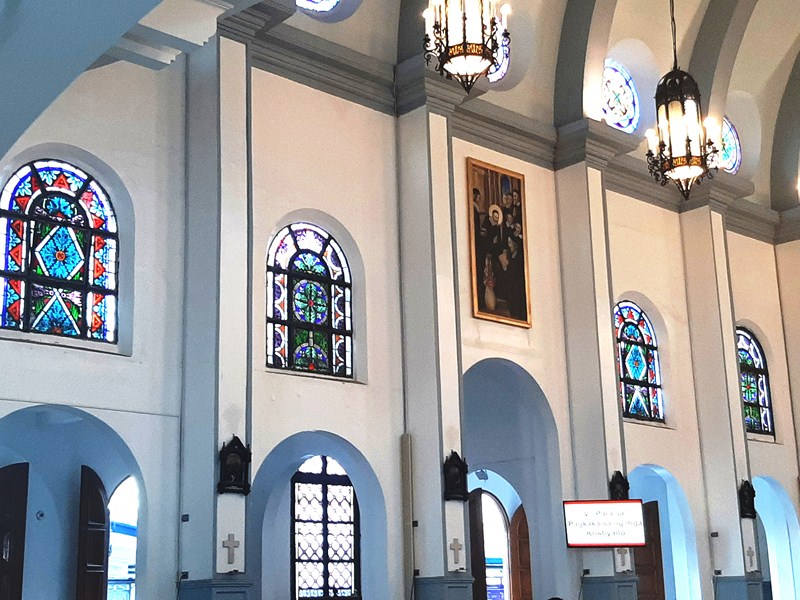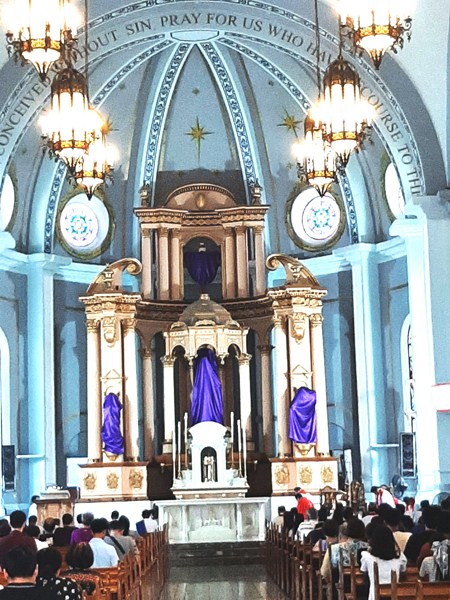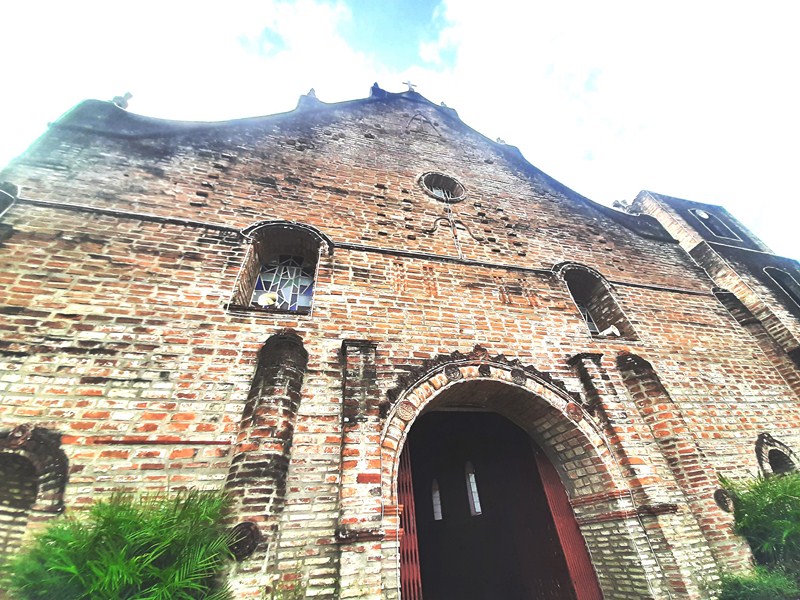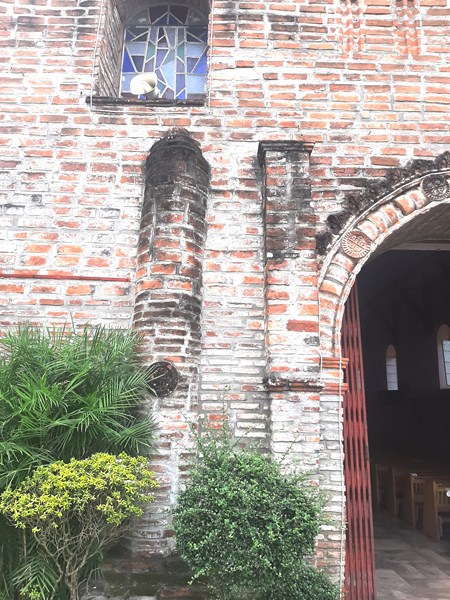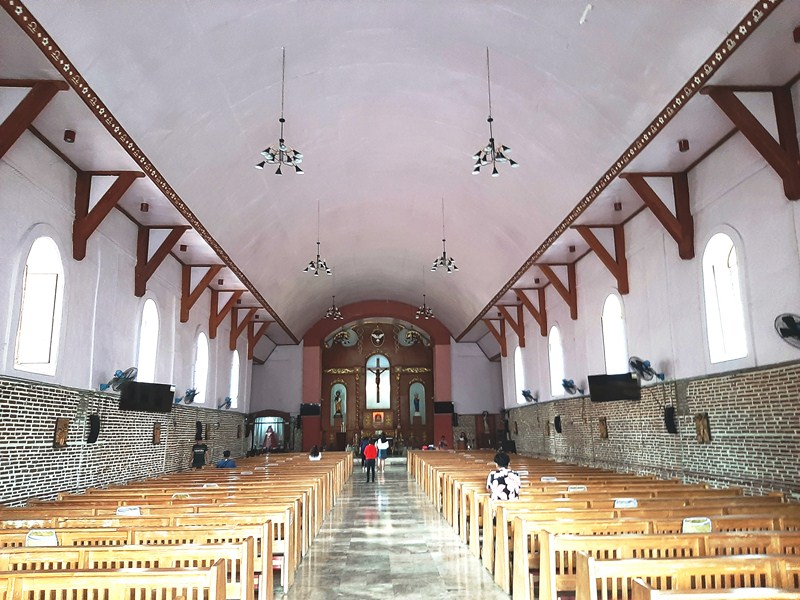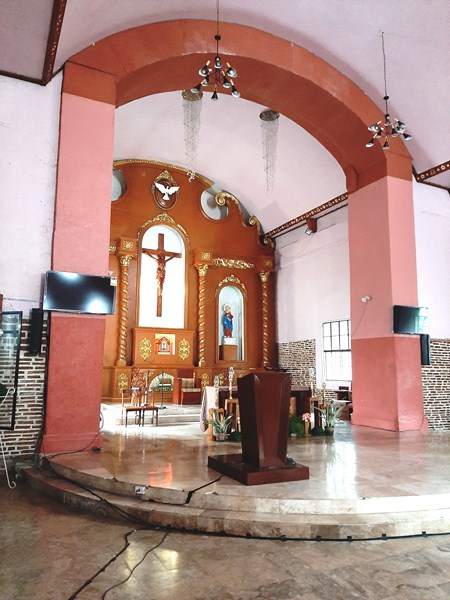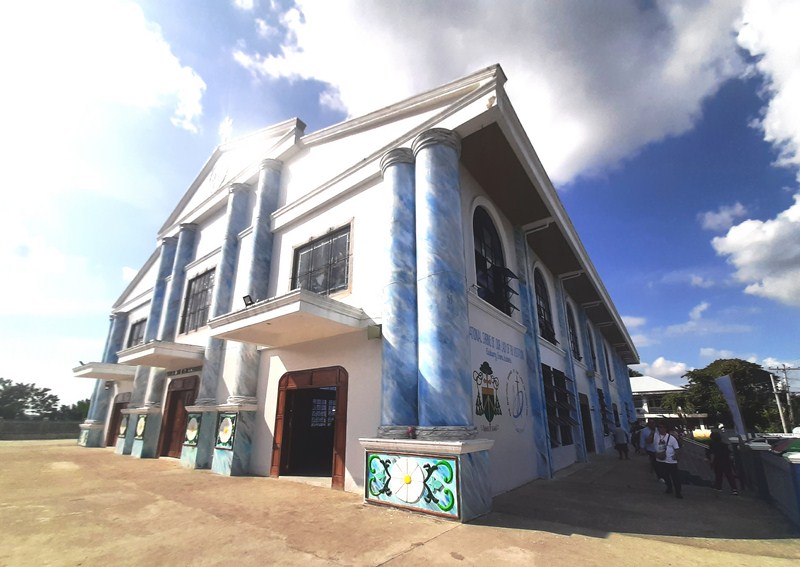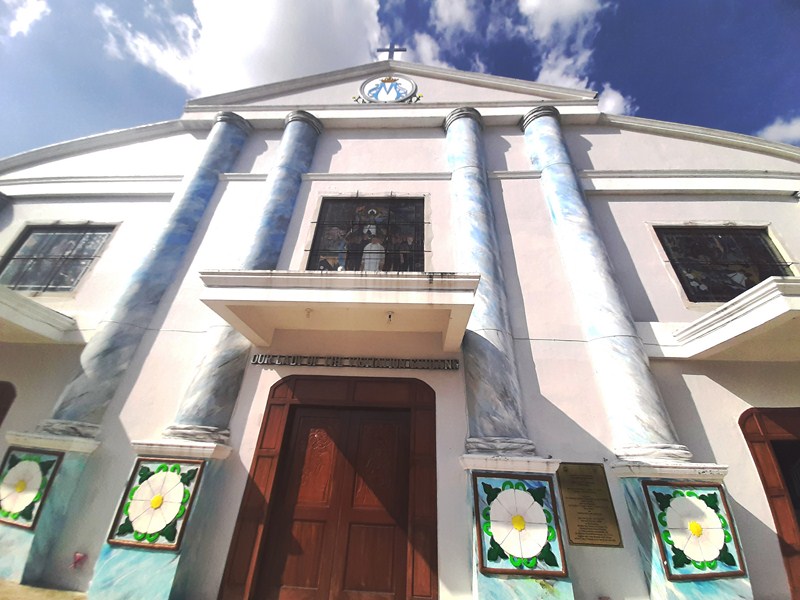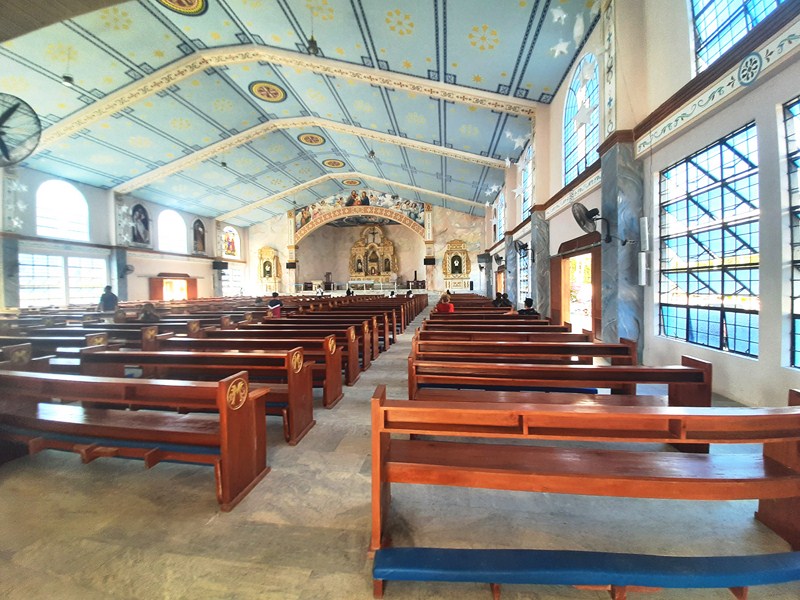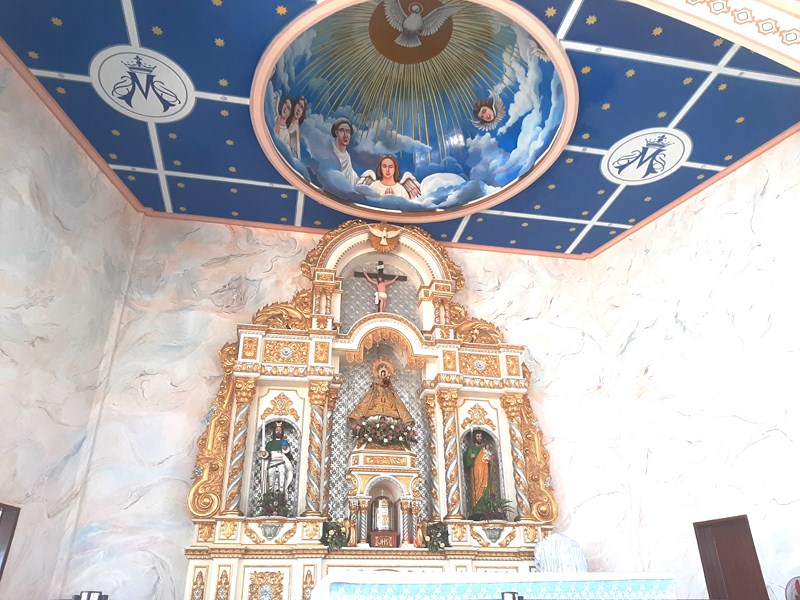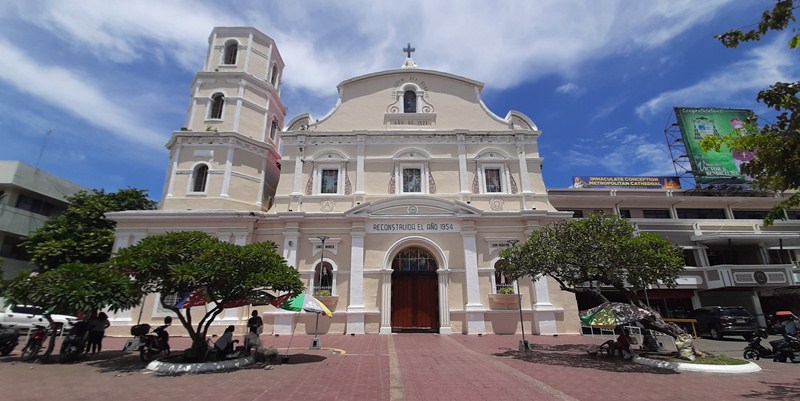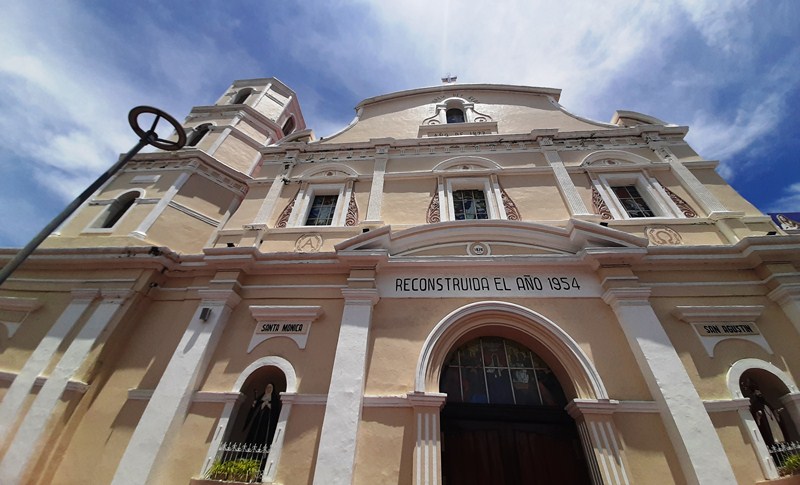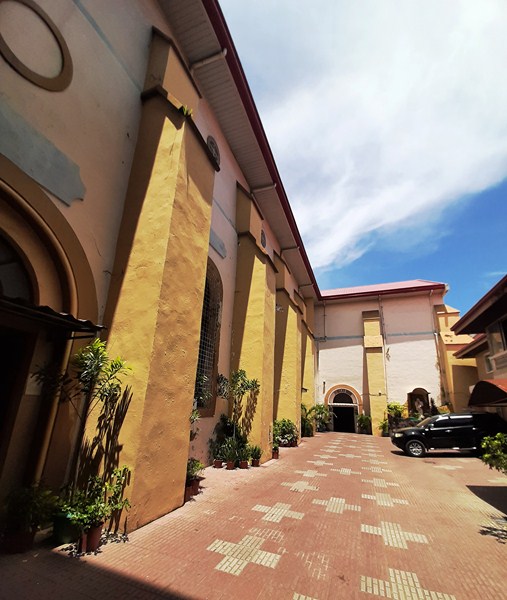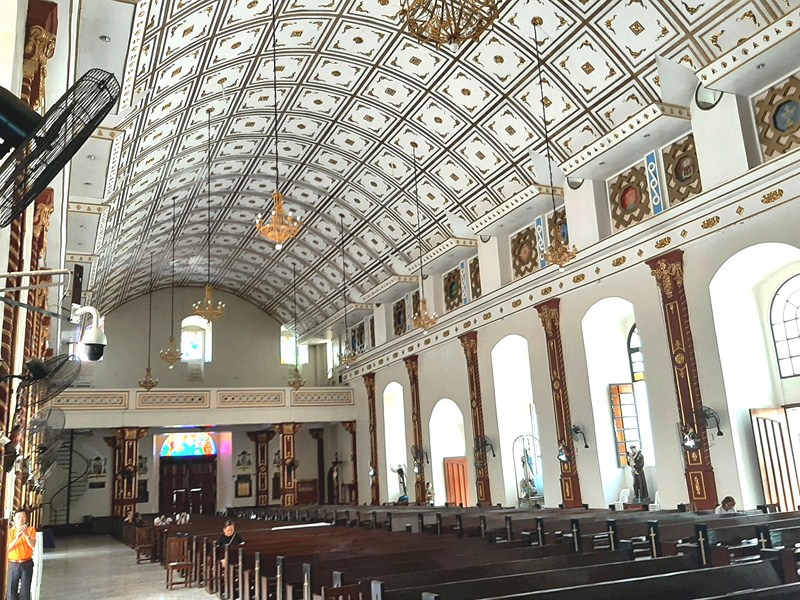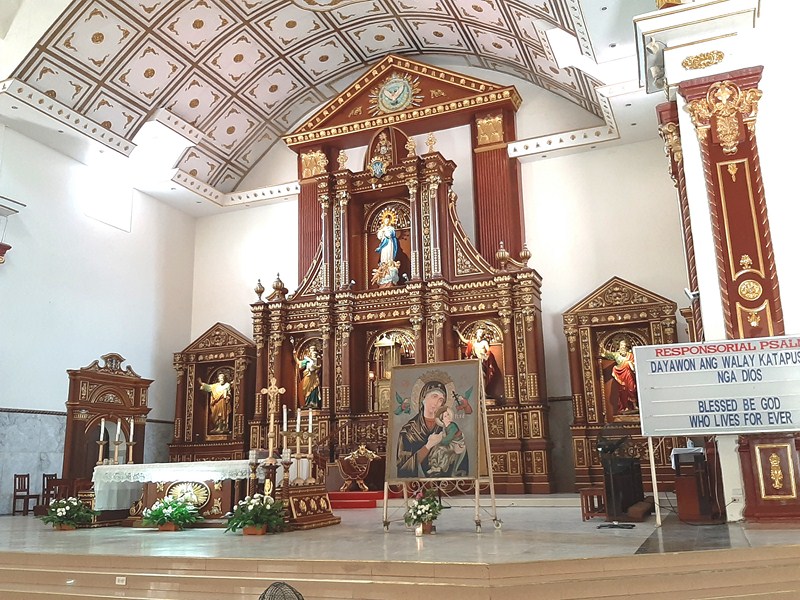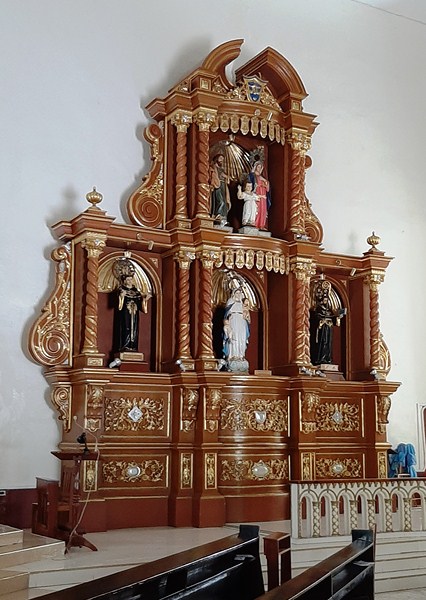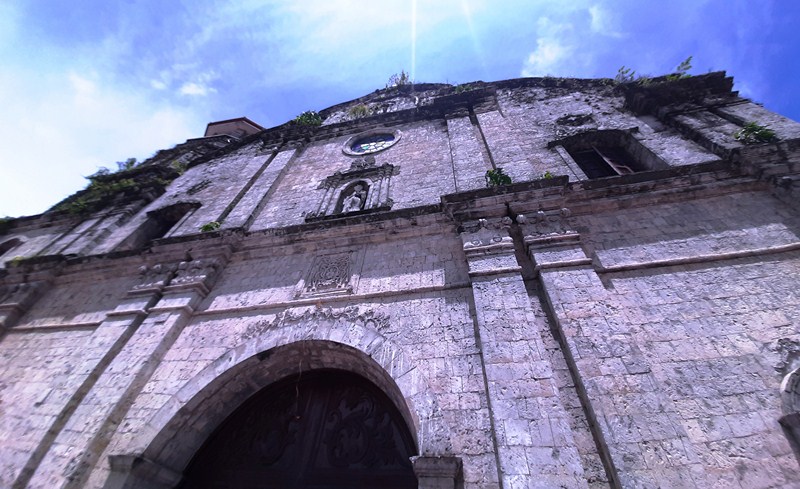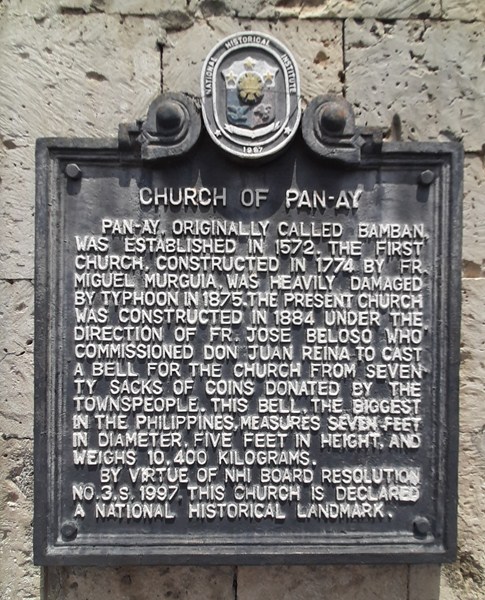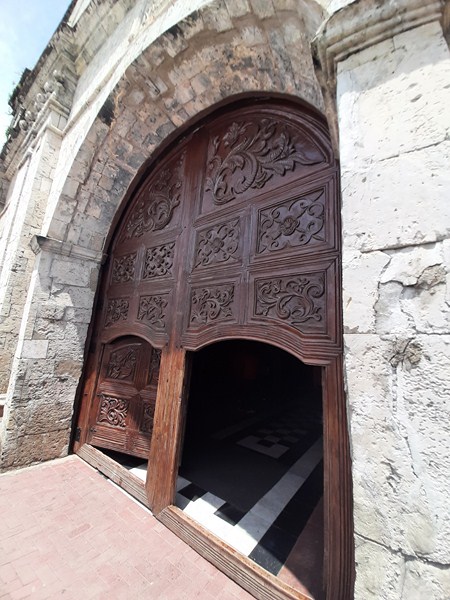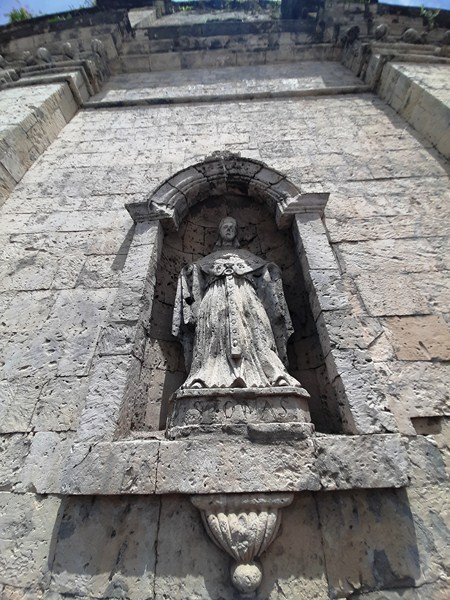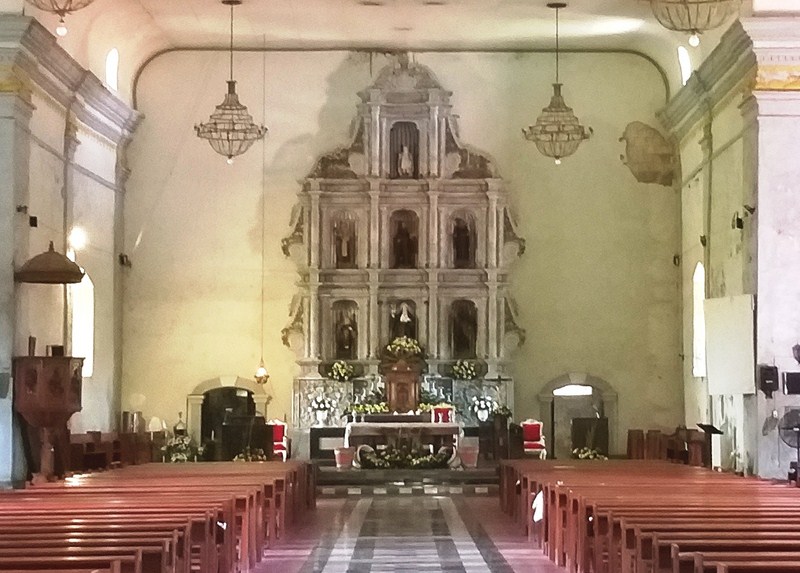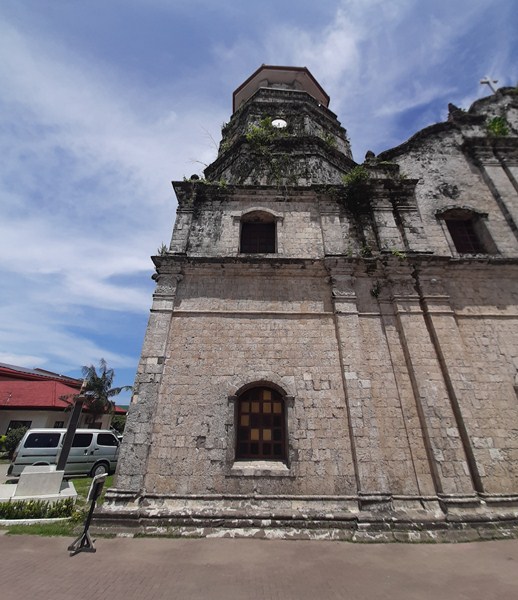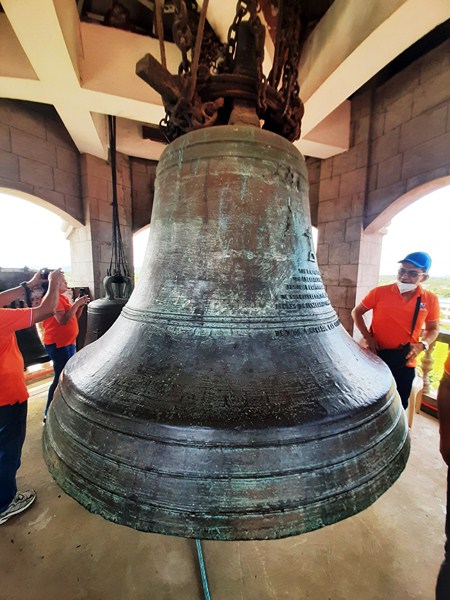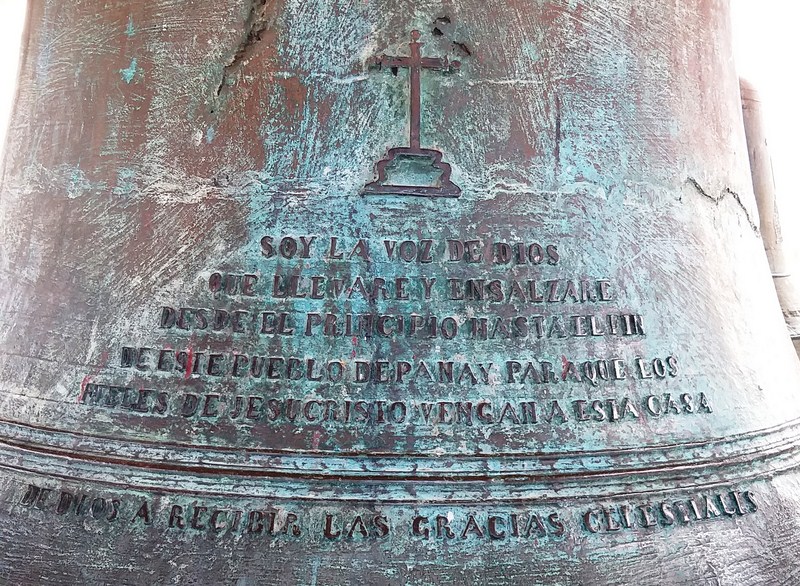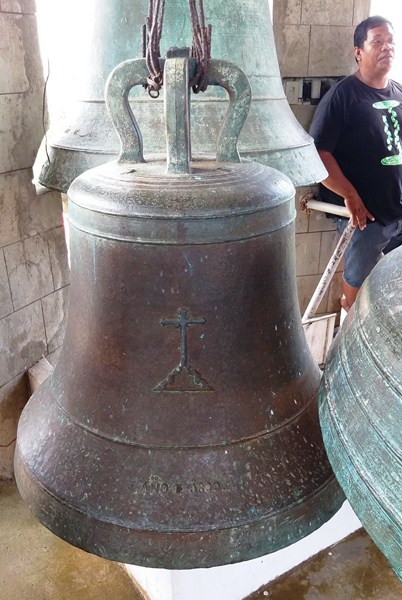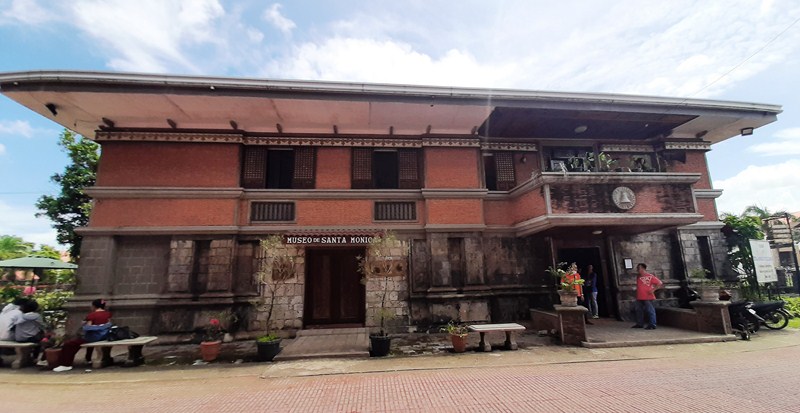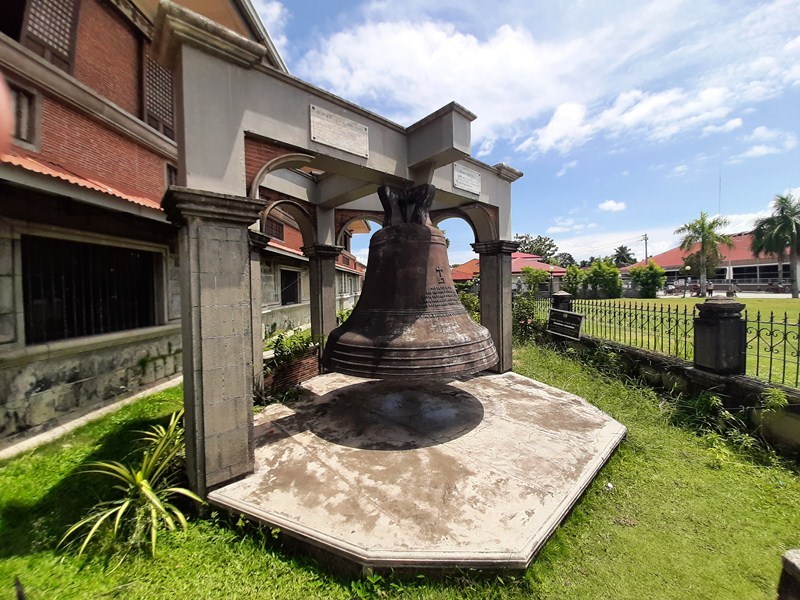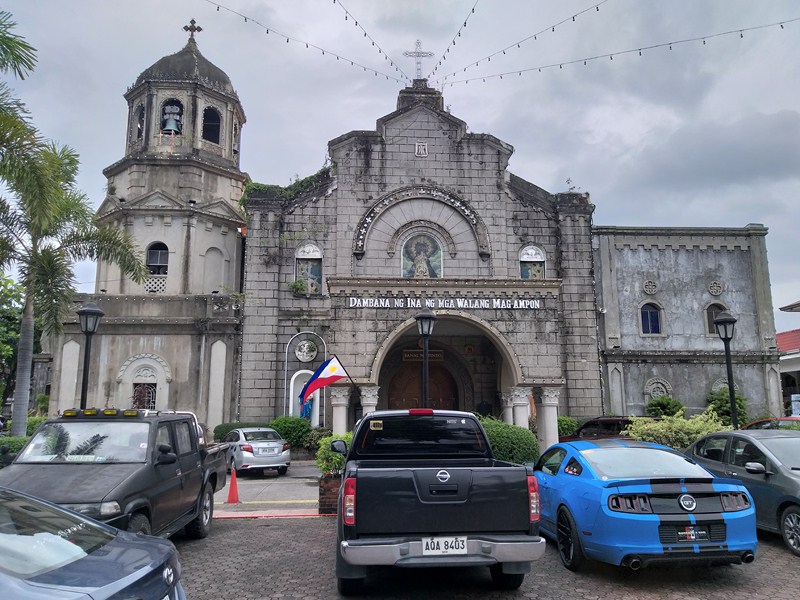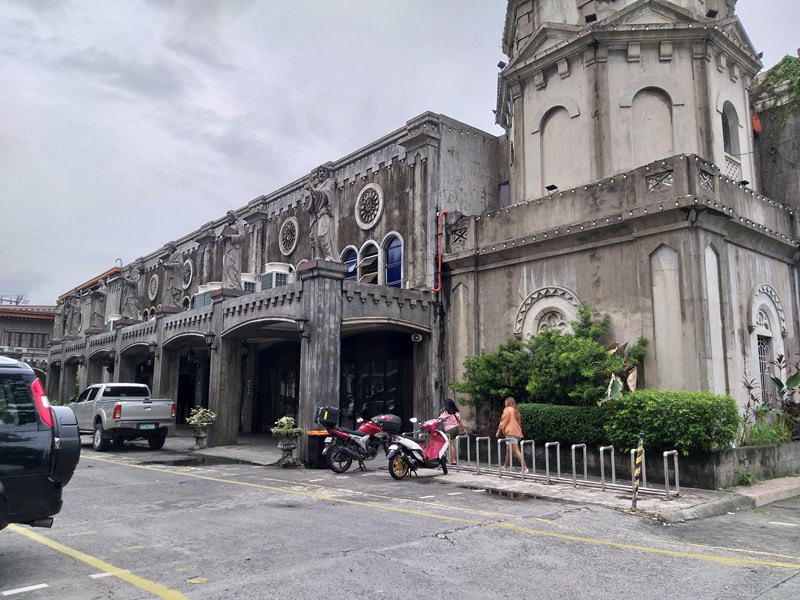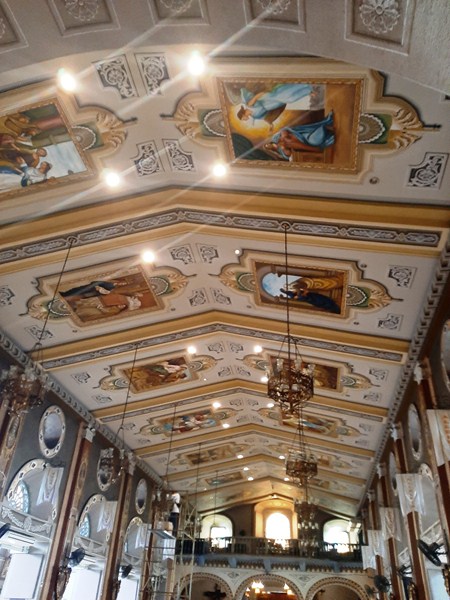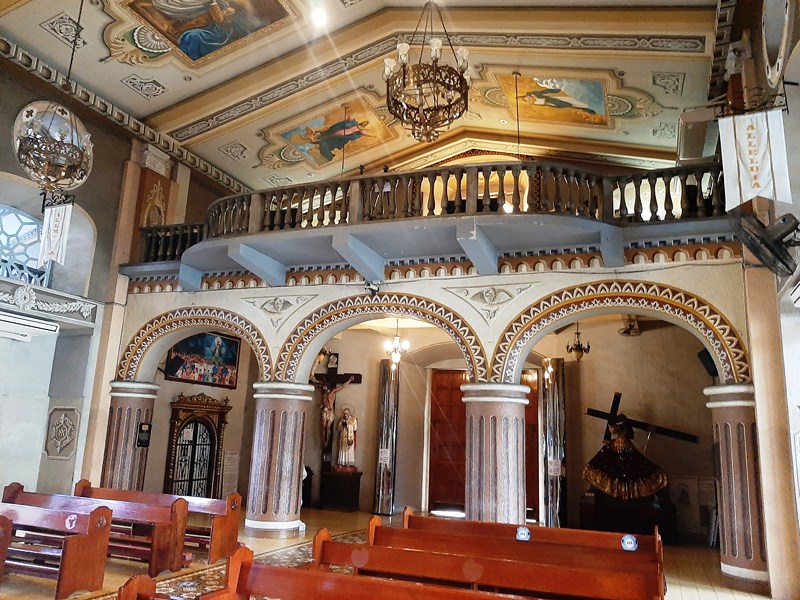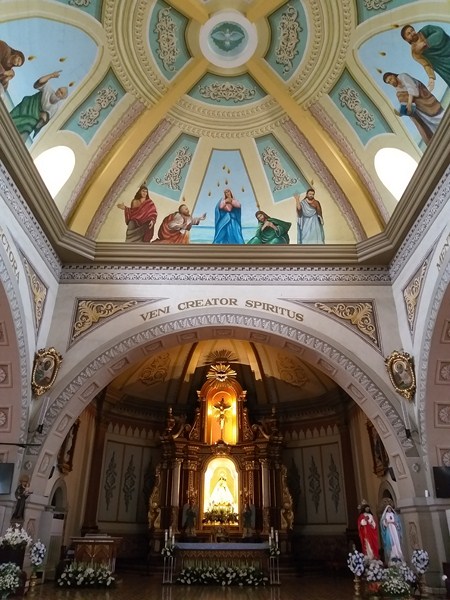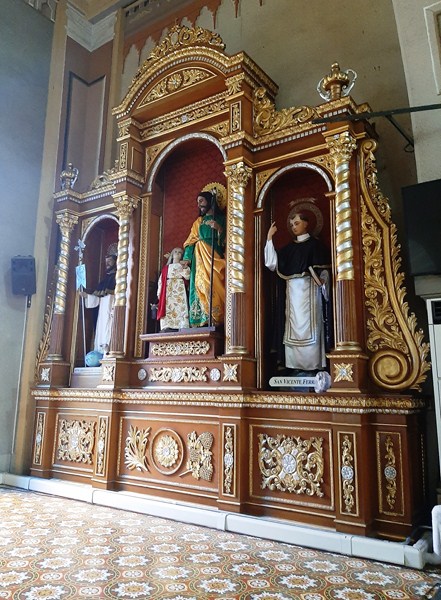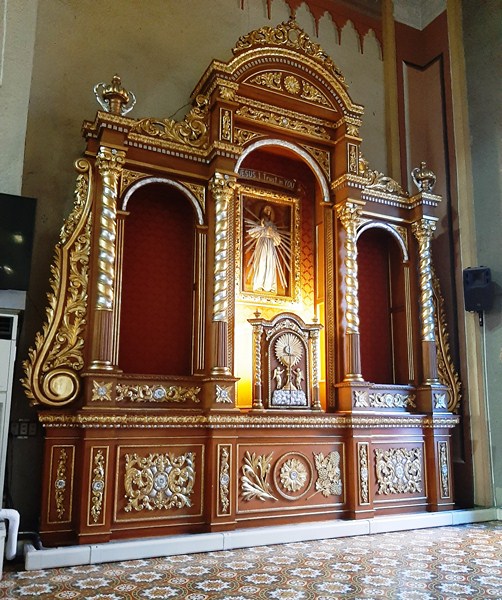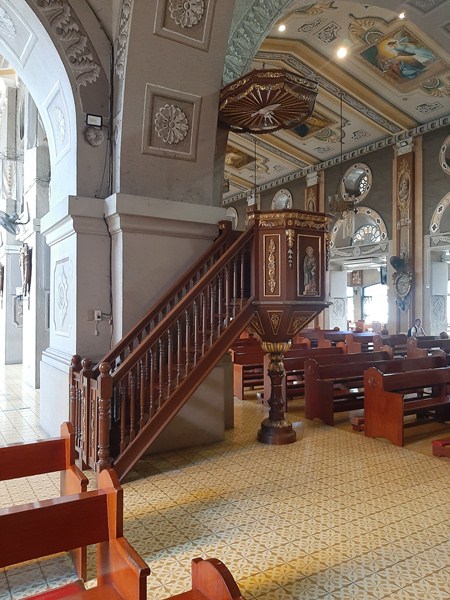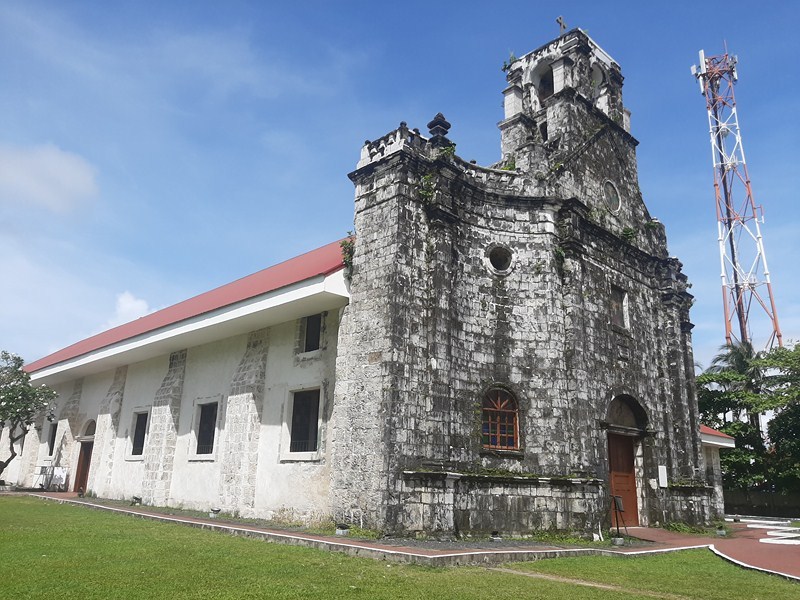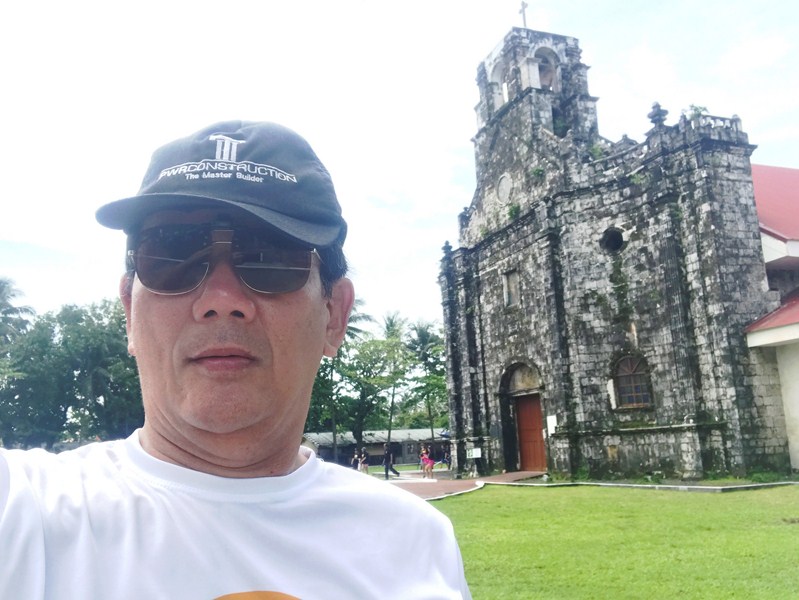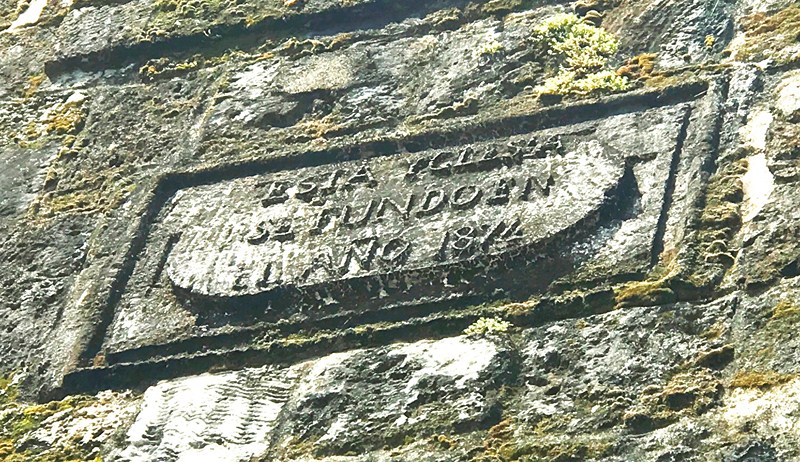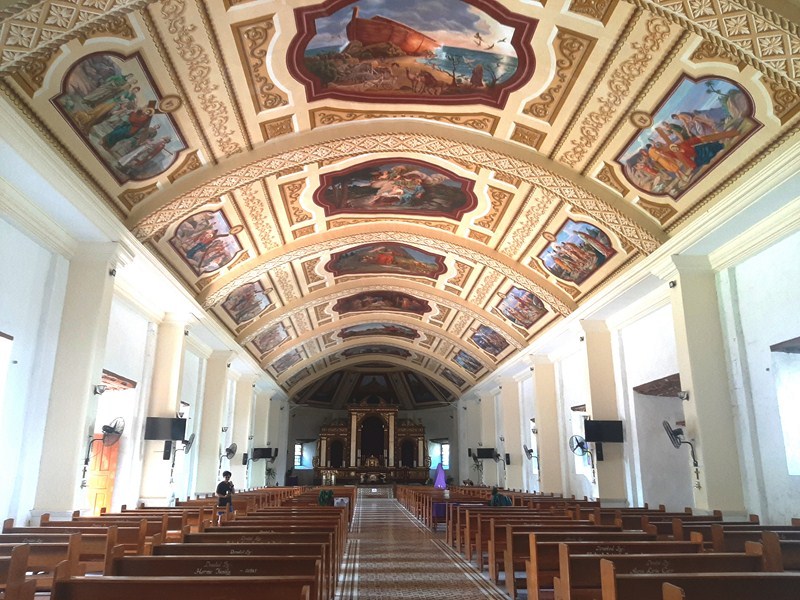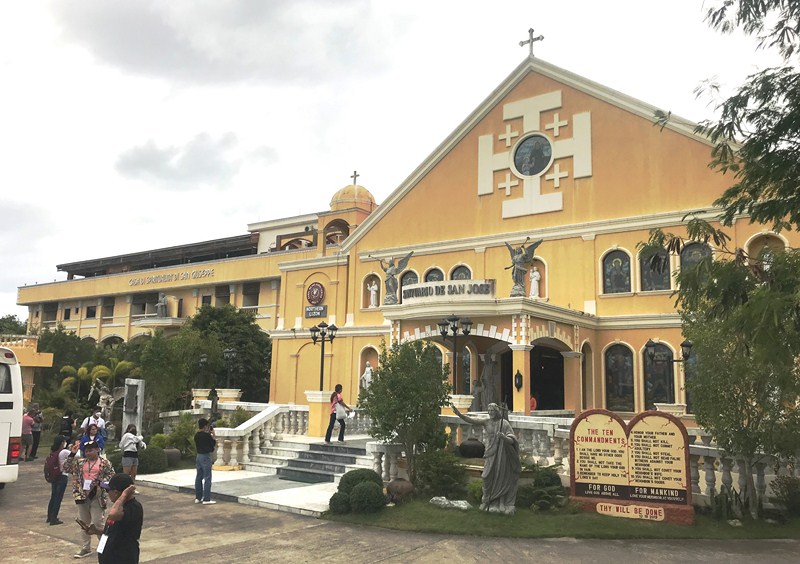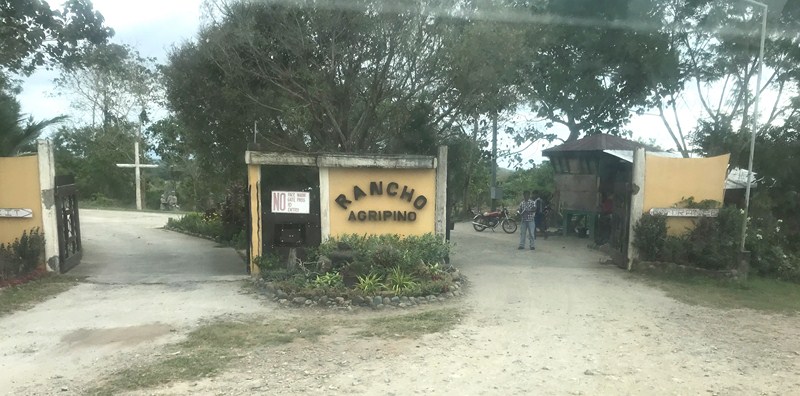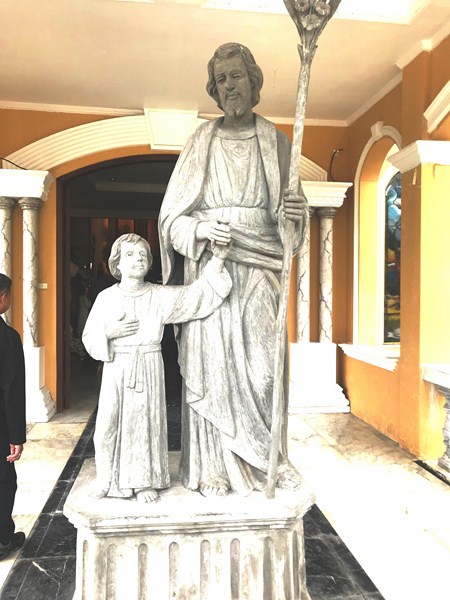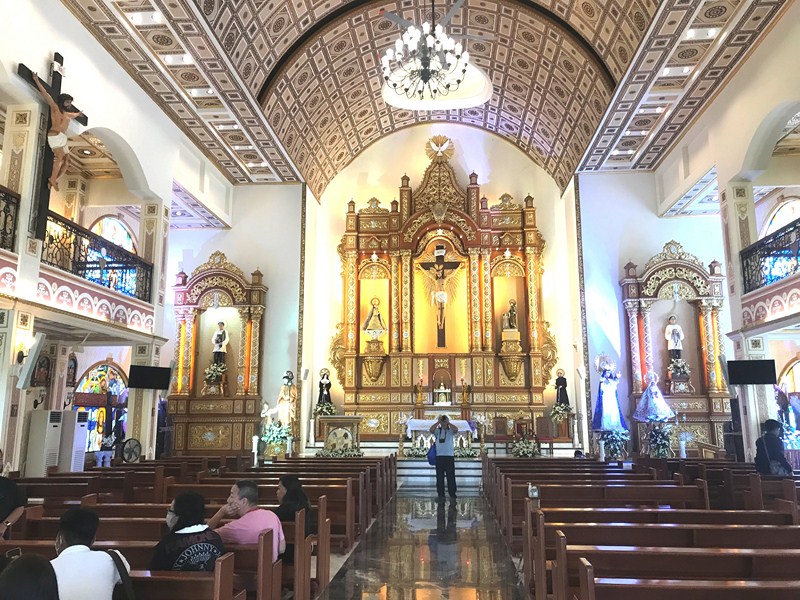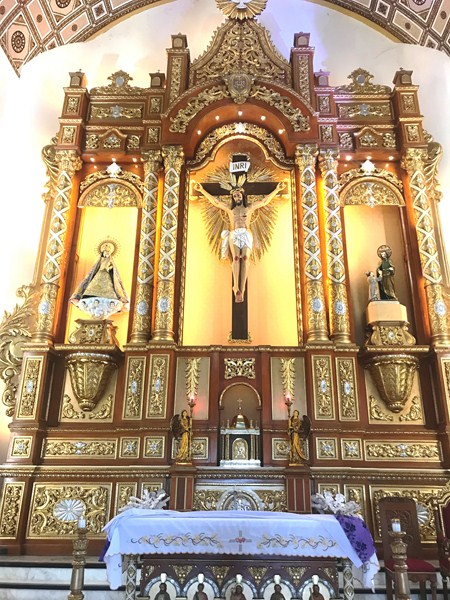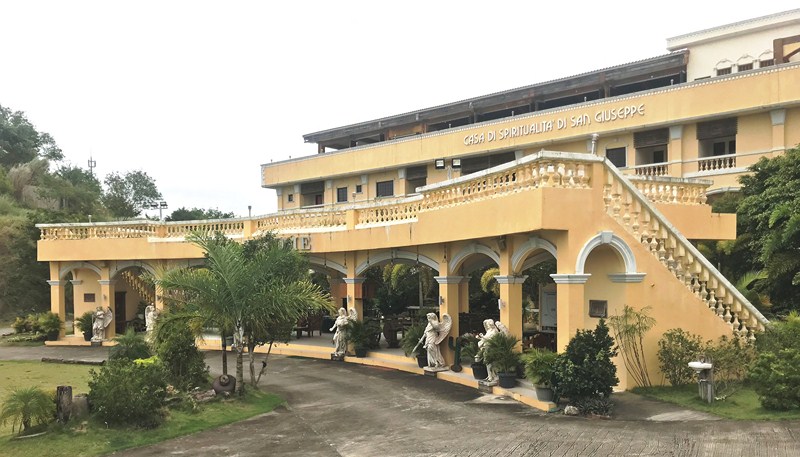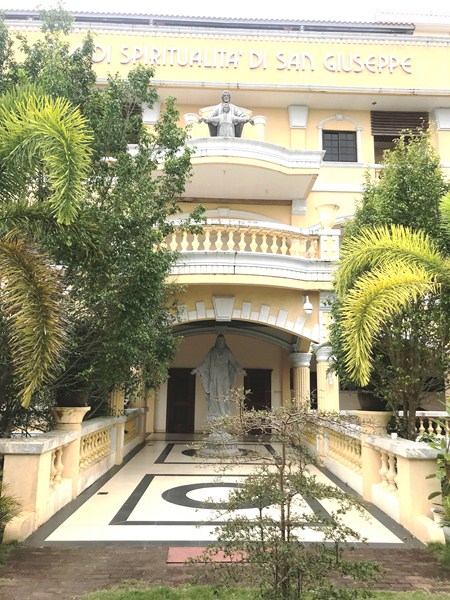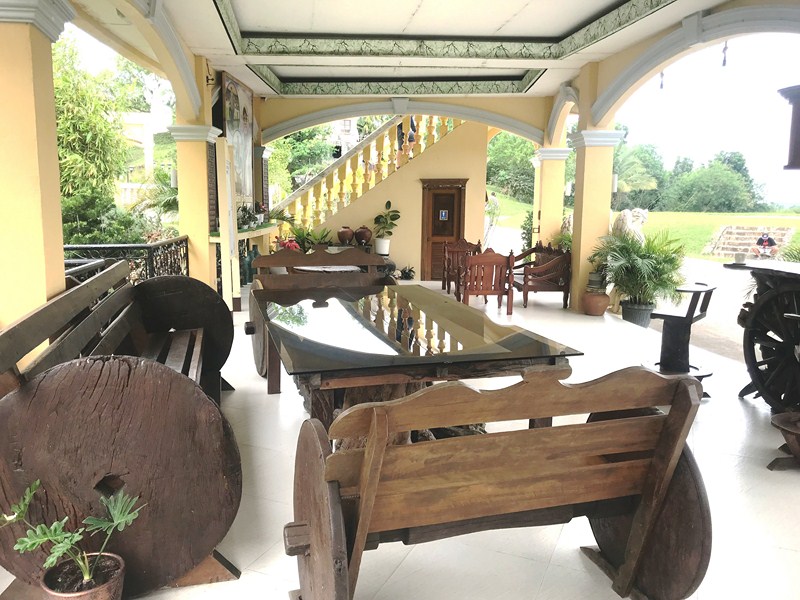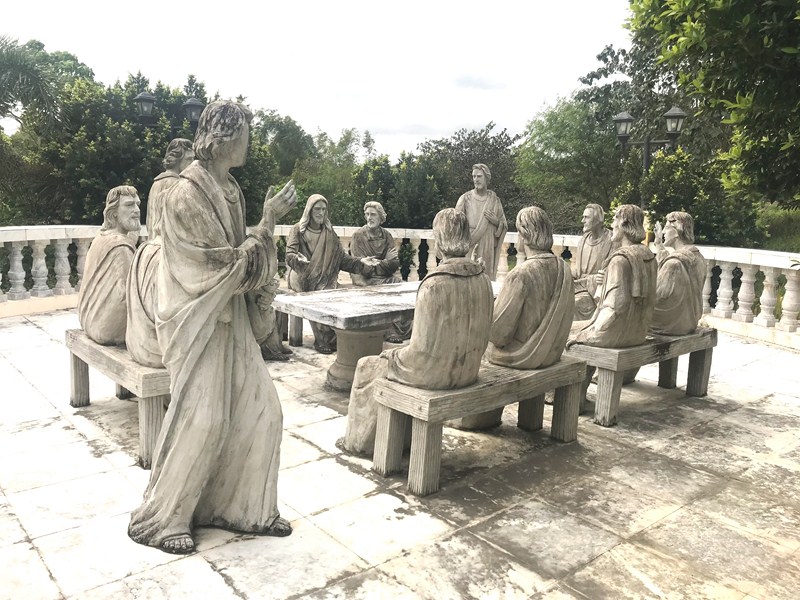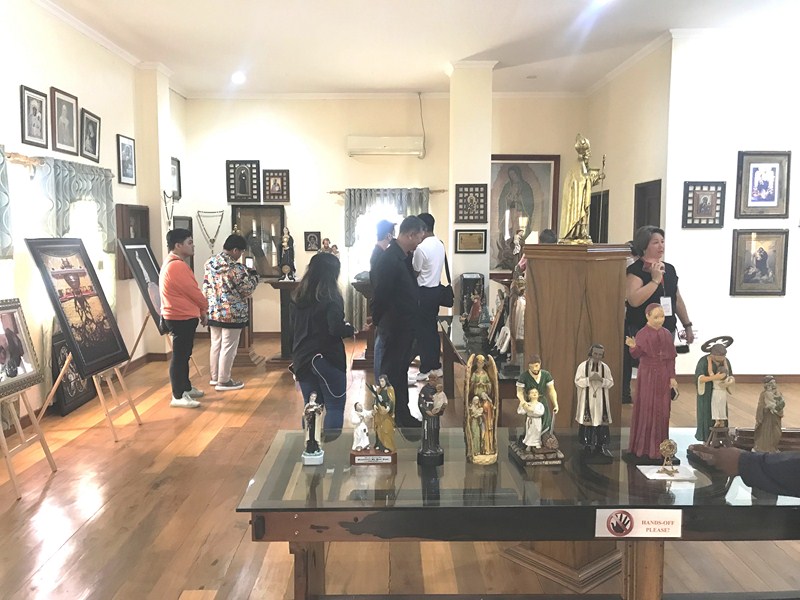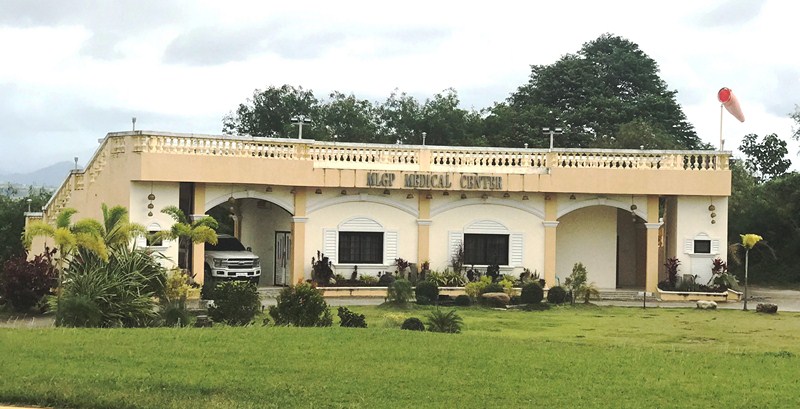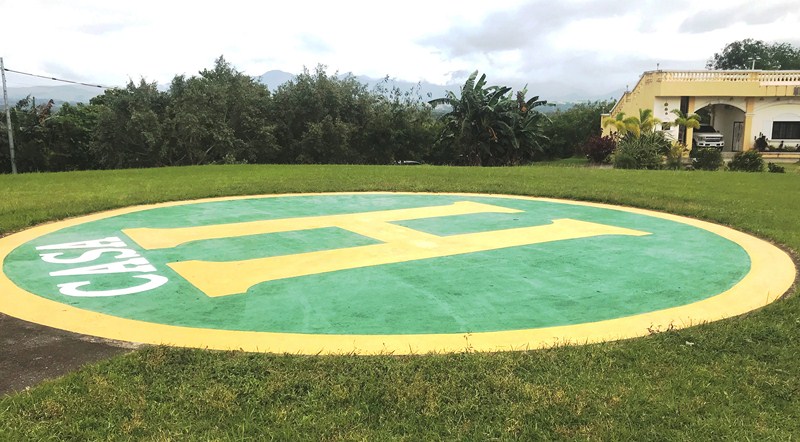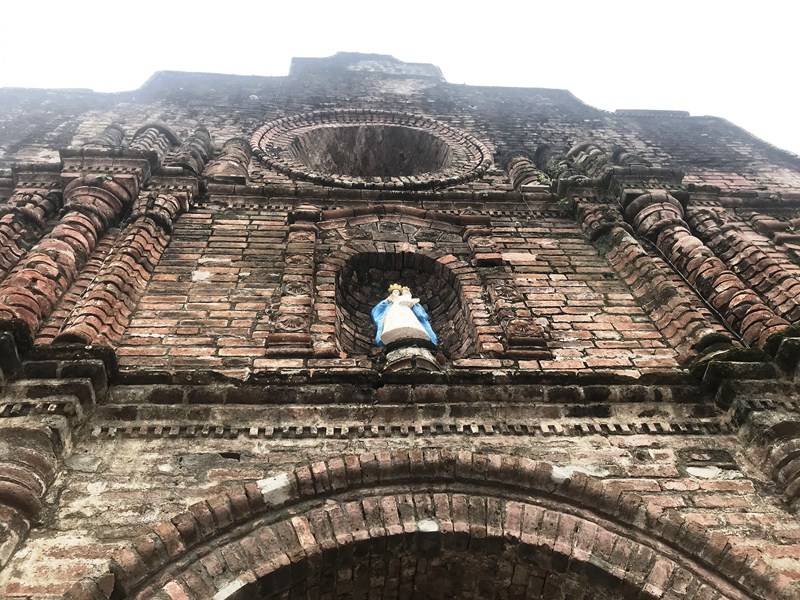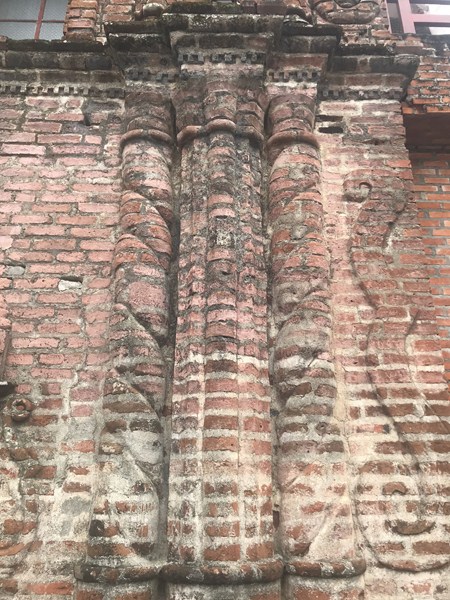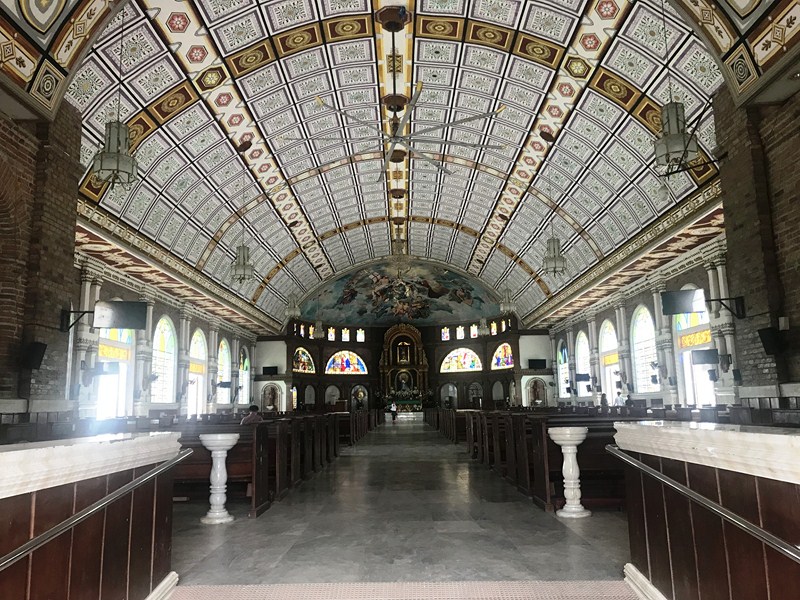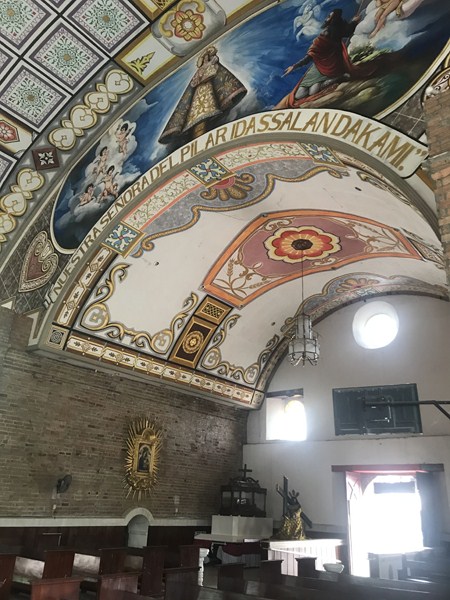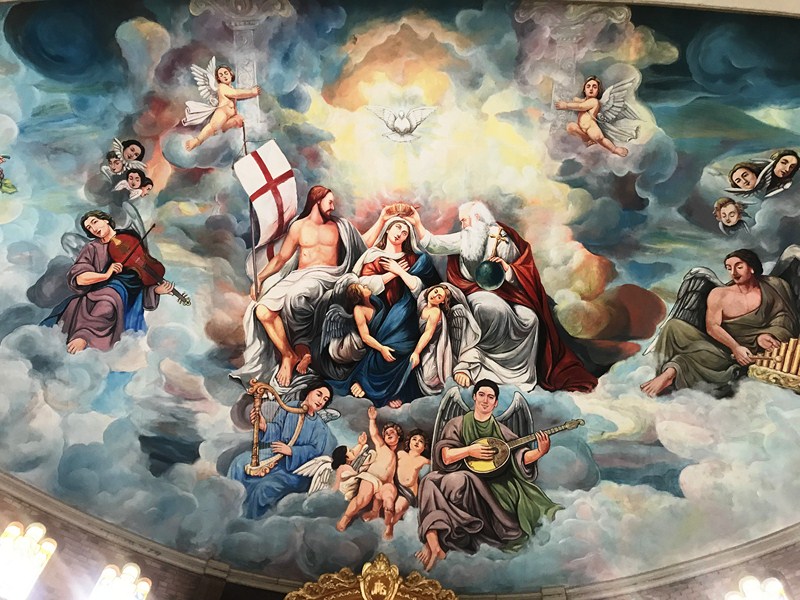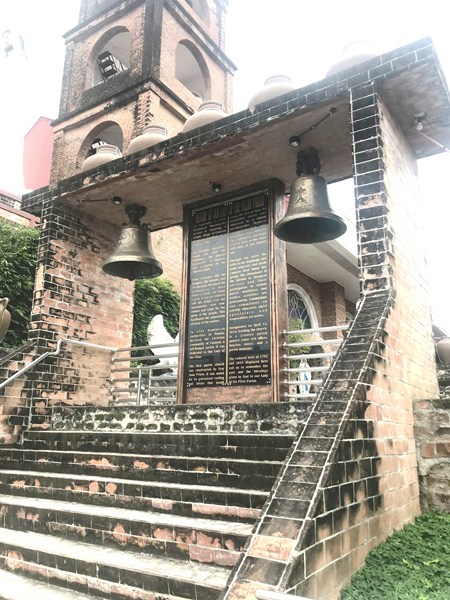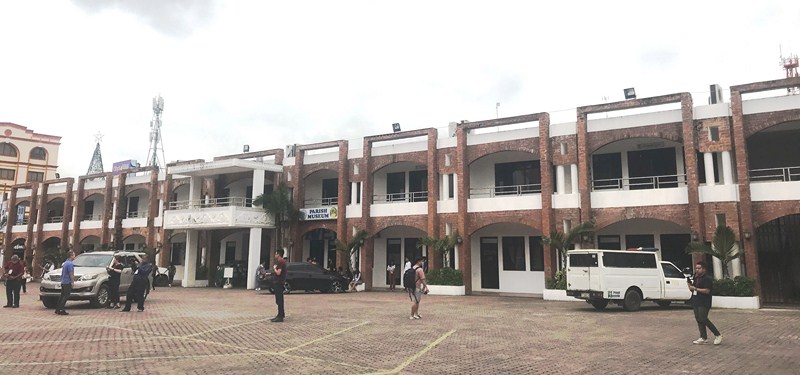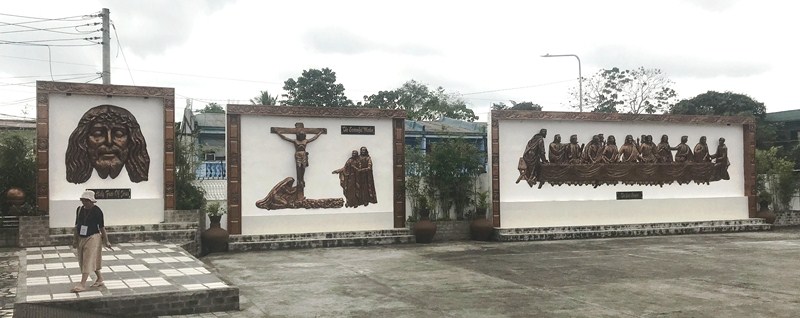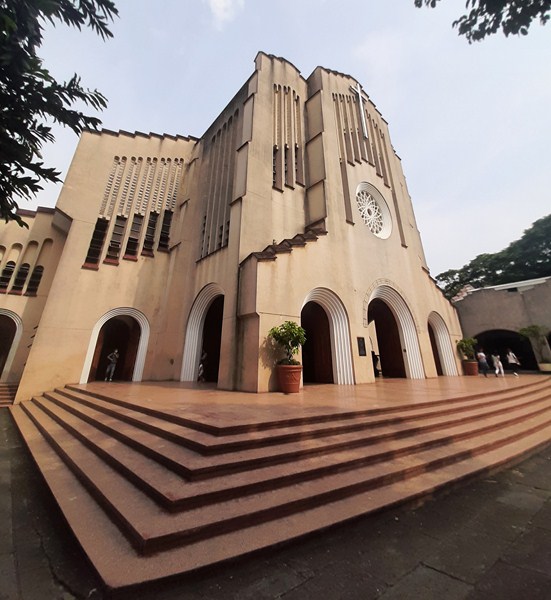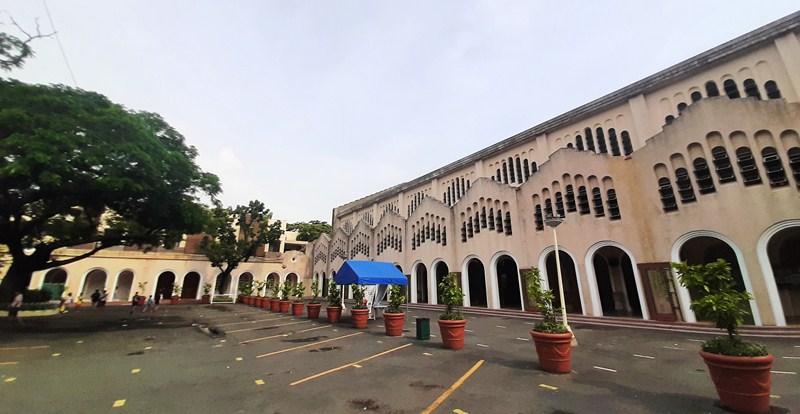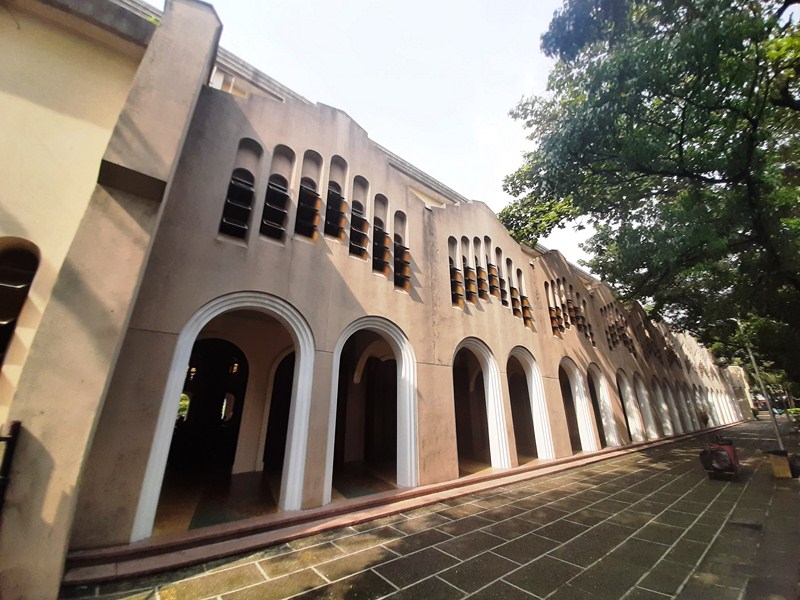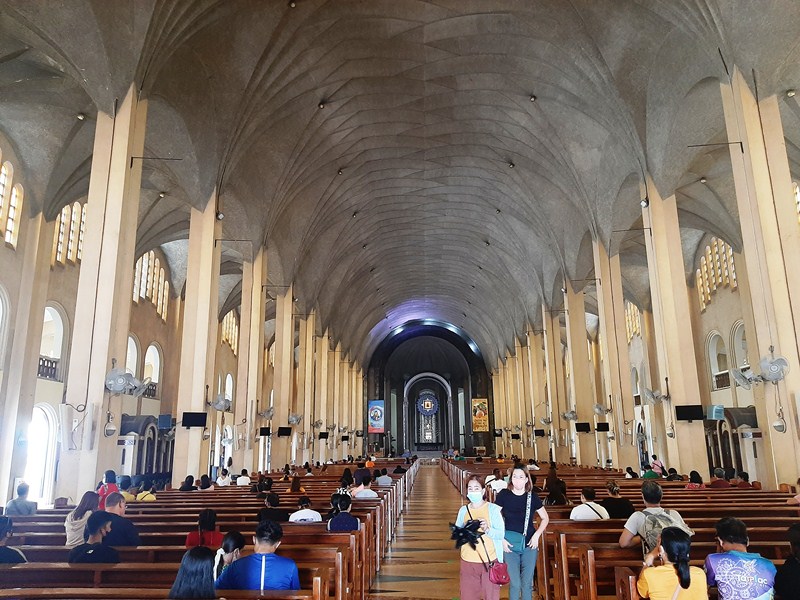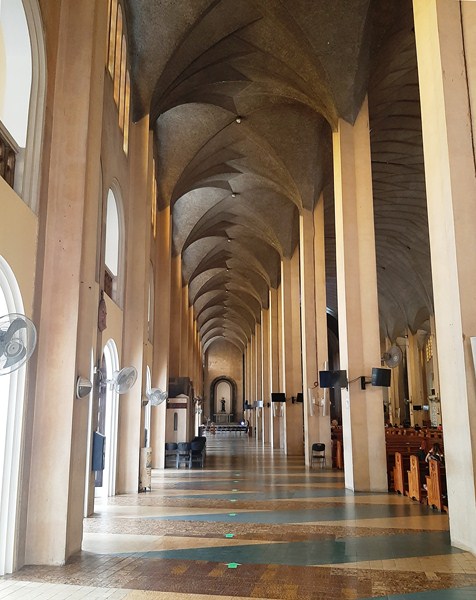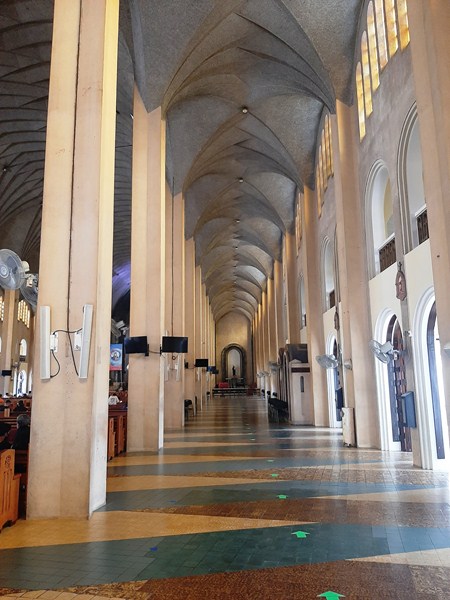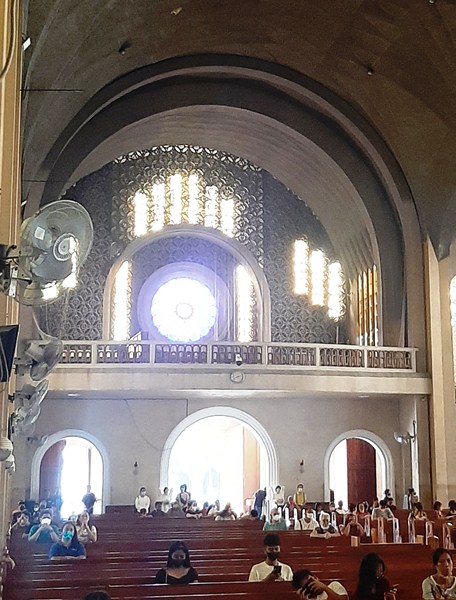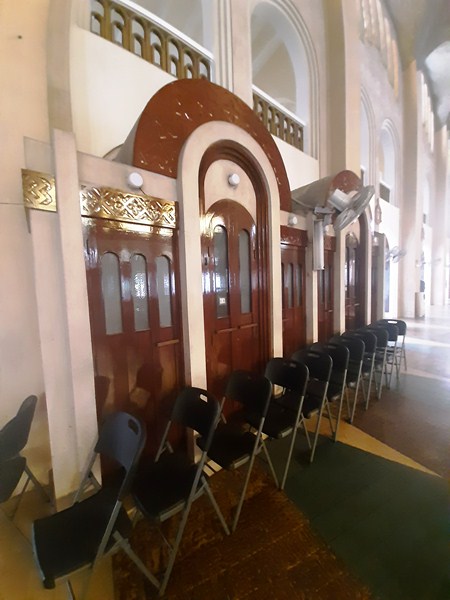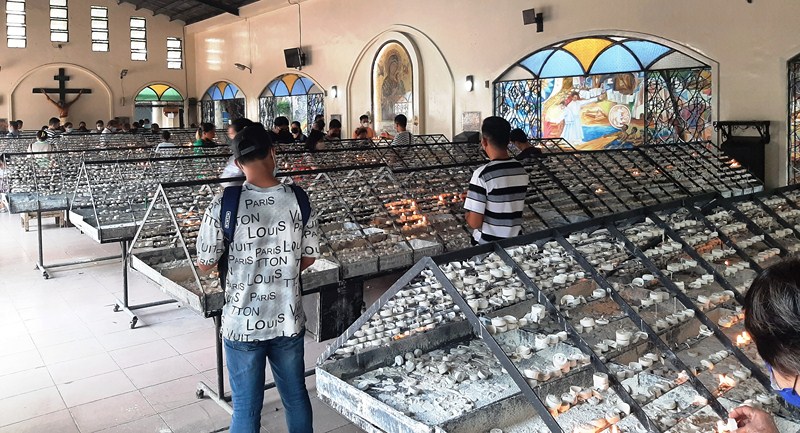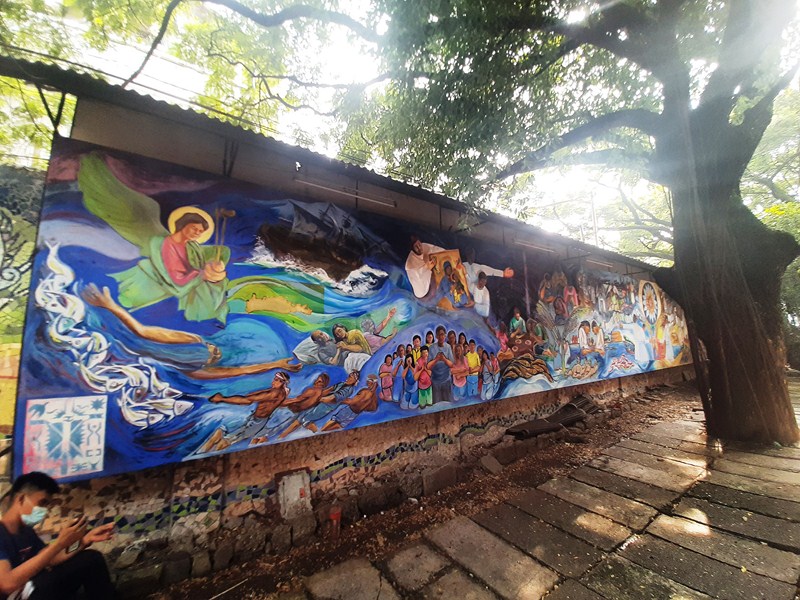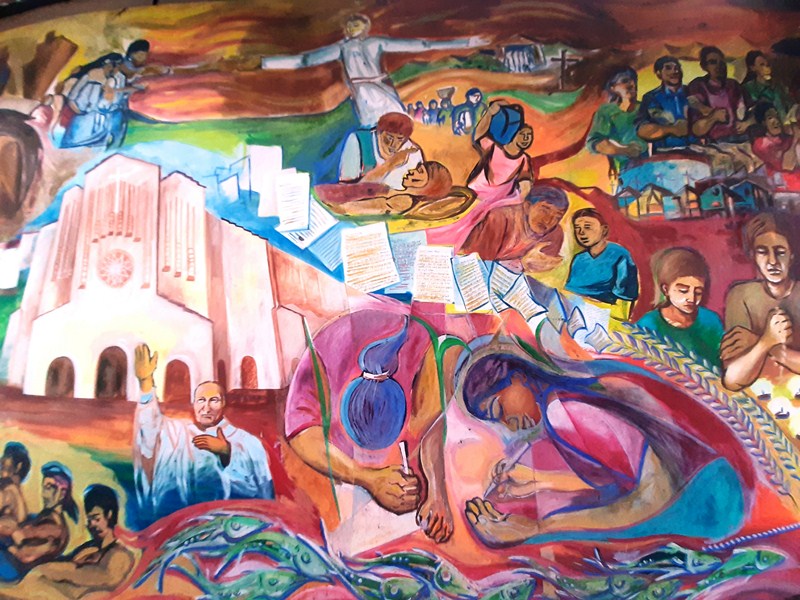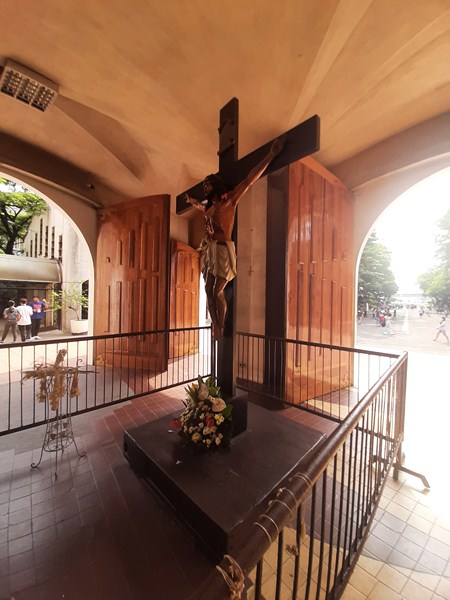The airy and relatively cool Archdiocesan Shrine of Our Lady of the Miraculous Medal (the original and established center for the propagation of the Miraculous Medal and the Vista Domiciliaria), formerly the Church of St. Vincent de Paul, had its beginning in 1872 when the Vincentians bought a piece of land in the barrio of San Marcelino (a part of the Parish of San Fernando de Dilao in Paco) which was a rice field near the Pasig River.
The house they built served as refuge to the seminarians and Vincentians housed in the San Carlos Seminary which was destroyed, together with most buildings in Intramuros, by the July 1880 earthquake.
A chapel, adjacent to the Vincentian Central House, was built in 1883. Later, the chapel was used as a church, from 1898 to 1909, when the church and convent of Paco were destroyed by the American forces in retaliation for their initial defeat by the Filipino forces following the declaration of war against the Americans in 1899. The parish was canonically established on December 6 1909 by Archbishop Jeremiah Harty (an alumnus of the Diocesan Seminary in St. Louis, Missouri which was under the direction of the Vincentians).

Historical plaque installed by the National Museum in 2018 declaring the church as an Important Cultural Property
The present concrete church was designed by Architect Andres Luna de San Pedro (son of the great Filipino painter Juan N. Luna) and built in 1912 (the 50th anniversary of the arrival of the Vincentians and the Sisters of Charity in the Philippines) by Belgian missionaries.
During World War II, the Japanese occupied the church for almost 7 months and, during the Battle of Manila in February 1945, was badly damaged when the Japanese burned the interior of the church, massacring scholars, professors and Vincentian Fathers who were living there.
From 1946, the dome, belfries and roof were restored and fitted with a stained glass windows. From 2007 to 2010, the pillars and walls were retrofitted; the galvanized iron of the roof was replaced with long-span, blue-colored sheets; the wooden trusses were replaced with steel trusses; and the entire exterior and interior walls of the church were repainted.
On September 10, 2022, seismic base isolators (acting like wheels to stabilize the building during earthquakes) were mounted, by RBRA Consulting Firm, on the pillars of the church, making it the first earthquake-resistant church in the Philippines.
On December 5, 2018, the church was declared as an Important Cultural Property by the National Museum of the Philippines and, on July 16, 2023, it was elevated into an archdiocesan shrine by Manila Archbishop Jose F. Cardinal Advincula. On that same date, the newly-renovated retablo (altar backpiece) was also blessed.
AUTHOR’S NOTES:
The church has a Latin Cross layout and a dome. Its two-level Baroque façade has balustraded portico with semicircular arched main entrance flanked by flat pilasters (with Corinthian capitals) and two smaller, semicircular arched entrances (topped by festoons) at the first level. Above the main entrance, at the second level, is a rose window flanked by two semicircular arched windows.
The triangular pediment, topped by a statue of Our Lady of the Miraculous Medal, has a centrally located bas relief also of Our Lady of the Miraculous Medal. Flanking the façade are two four-storey, square bell towers with semicircular arched windows. The receding fourth level has a balustrade.
Archdiocesan Shrine of Our Lady of the Miraculous Medal: 959 San Marcelino St., Ermita, Manila 1000, Metro Manila. Telefax: 2525-7853 and 2524-2022 local 101. Feast of St. Vincent de Paul: September 27. Feast of Our Lady of the Miraculous Medal: November 27.
How to Get There: The church is located within Adamson University (the church is commonly called Adamson Church), beside the university’s CS Walkway and SV Building. The nearest bus stop to Adamson University is D. Romualdez Sr./United Nations Ave..

